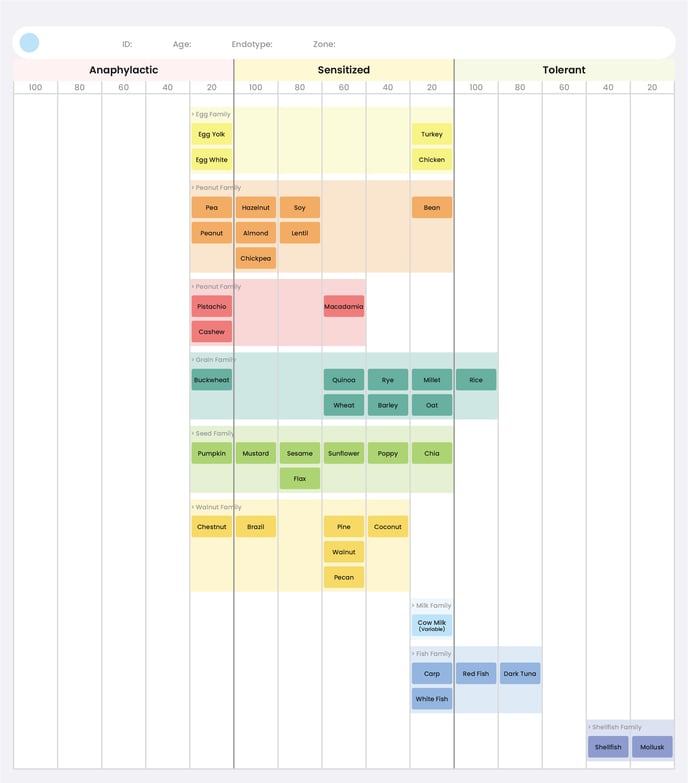What is a snapshot? How do I read my snapshot?
Using AI and machine learning, we analyze over a trillion data points to group or endotype your child's case and determine the severity and relationship of allergic proteins that affect your child.
Using AI and machine learning, we analyze over a trillion data points to group or endotype your child's case and determine the severity and relationship of allergic proteins that affect your child. The snapshot is an individualized summary of this analysis and is the foundation for your treatment plan.
The snapshot categorizes allergen sensitivity by Anaphylactic, Sensitized, and Tolerant. The goal of TIP treatment is to move all foods to the Tolerant column. See an example of a snapshot below.
